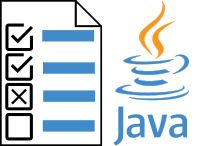
Maintainable and readable test code is crucial to establish a good test coverage which in turn enables implementing new features and performing refactorings without the fear of breaking something. This post contains many best practices that I collected over the years of writing unit tests and integration tests in Java. It involves modern technologies like JUnit5, AssertJ, Testcontainers, and Kotlin. Some recommendations might be obvious to you, but some might conflict with what you’ve read in books about software development and testing.

Testing classes in isolation and with mocks is popular. But those tests have drawbacks like painful refactorings and the untested integration of the real objects. Fortunately, it’s easy to write integration tests that hit all layers. This way, we are finally testing the behavior instead of the implementation. This post covers concrete code snippets, performance tips and technologies like Spring, JUnit5, Testcontainers, MockWebServer, and AssertJ for easily writing integration tests. Let’s discover integration tests as the sweet spot of testing.

Unit Testing in Kotlin is fun and tricky at the same time. We can benefit a lot from Kotlin’s powerful language features to write readable and concise unit tests. But in order to write idiomatic Kotlin test code in the first place, there is a certain test setup required. This post contains best practices and guidelines to write unit test code in Kotlin that is idiomatic, readable, concise and produces reasonable failure messages.

At a first glance, in-memory databases (like H2 or Fongo) look like a good idea. You can test your code without having to worry about installing and managing a dedicated database server up front. Just start your tests and the H2 database will be up and running. However, this comfort comes with severe drawbacks. In this post, I explain my reservations and point out Docker as an alternative which can be easily used with TestContainers or within the Gradle/Maven build.

Testing RESTful Web Services can be cumbersome because you have to deal with low-level concerns which can make your tests verbose, hard to read and to maintain. Fortunately, there are libraries and best practices helping you to keep your integration tests concise, clean, decoupled and maintainable. This post covers those best practices.

Dropwizard produces a fat jar containing every dependency your microservice needs to run. This includes a web server. This way, no web server needs to be installed and configured on the target machine. However, there is some infrastructure left (like the JRE) which still has to be installed before the deployment. That’s where Docker enters the stage. With Docker we can produce an artifact containing really everything we need to run our microservice. In this post, we take a look at how we can integrate Docker into our Maven build, run our tests against the container and push the image to a repository.





